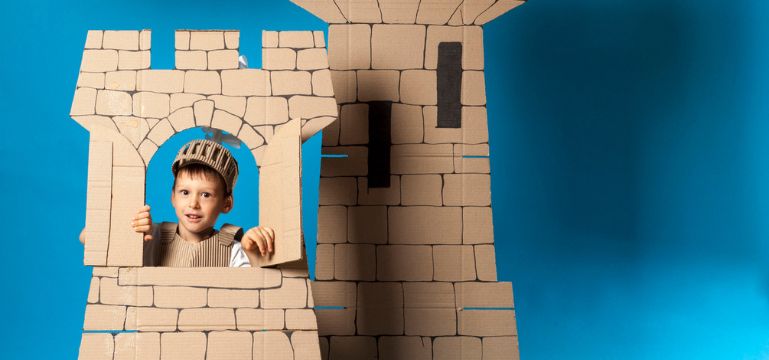How To Facilitate a Child Centred Approach Using Loose Parts To Enhance Creativity, Resilience And Collaborative Skills.

Quick links:
Information about the school
Cefn Mawr County Primary School is located in the close knit community of Cefn Mawr in a semi-rural area of Wrexham. The school provides education for 195 pupils from 3 to 11 years old. It offers nursery provision during the morning session, an on-site morning playgroup, called ‘Bright Stars’ and wrap around care for all pupils. Around 23% of pupils are eligible for free school meals. The school aims to help pupils realise that there is a world of opportunity available to them and places inclusion at its core.
Context and background to the effective or innovative practice
As part of developing a more child centred curriculum to support the four purposes of Curriculum for Wales, staff researched the use of loose parts, provocations and the work of Carl Rogers. The reception class teacher studied for a level 4 qualification in person centred counselling and began to aim towards using these theories in her classroom. Over the past few years, the school has kept the effectiveness of the approach under review and constantly adapted to the needs of the children.
Description of nature of strategy or activity
A child centred approach argues against a prescribed curriculum that may have little meaning to children in favour of significant, experiential learning which proceeds at a rapid pace, has a quality of personal involvement, is self-initiated, makes a difference to the learner and is evaluated by them. The aim is to help children to prize themselves, build their confidence, self-esteem and excitement in discovery as they become aware that this comes from within. This is achieved through a climate of trust to facilitate children’s independence, allows them to build goals they want to achieve, sets them free to learn what they wish and be who they are. Rogers challenges teachers to ask, ‘What does it feel like to be a student in my classroom?’ He notes that the qualities needed by teachers are realness, deep empathic understanding and a warm, loving acceptance of the child as they are.
Provocations, presented to draw the children in, and loose parts have been the key to the school facilitating this approach, as they are an open-ended invitation to the children to explore, express, investigate, learn, represent and create. The school sees its children as capable and creative, so the teacher investigates alongside them and helps them to uncover their thinking and make the learning visible. Staff aim towards more open possibilities rather than limited choices or specific tasks. They recognise that there is a developmental process to the use of loose parts and children access resources at their own level. Longer amounts of time were needed for children to reach deep play and resources built up slowly with clear boundaries around their use. The school aims to further expand this approach, allowing children to have a greater voice in developing a meaningful curriculum for themselves.
For example, following a morning of research on castles, the children were provided with a range of Loose Parts to show what they had learnt and deepen their understanding, within and across areas of learning, make connections, transfer their learning into a new context and develop the sophistication of their vocabulary. Some chose to explore their learning in the role play area and were provided with a range of flat pack boxes to create their own structures, others used different construction kits, tubes, material and tins. Some preferred to be outside and divided themselves into ‘builders’ and ‘attackers’. The ‘builders’ moved our tough tray to the best spot to see any attack coming and organised themselves to move mud for a hill, water for a moat and loose parts for the castle. The ‘attackers’ used large loose parts to create camps and tried to find any weak spots in the castles. Castle designs were then improved after the feedback and they were offered different ways to record such as clip boards, pavement chalk, digital cameras and ipads to allow for independence and a range of outcomes. These were used as ‘what a good one looks like’ to inspire others.
What impact has this work had on provision and learners’ standards?
This self-directed approach in an atmosphere that is stimulating, relaxed and happy has improved initiative, self-responsibility and encouraged cooperation. Creativity, resilience and collaborative skills have been greatly enhanced and deep, positive relationships with peers and adults have developed.
How have you shared your good practice?
Practice has been shared within the school and a tutor from the Person Centred Counselling course worked alongside staff. The school regularly shares its practice with its cluster group of schools and have led several workshops across North Wales for the local regional consortium. Several professionals have visited the school.